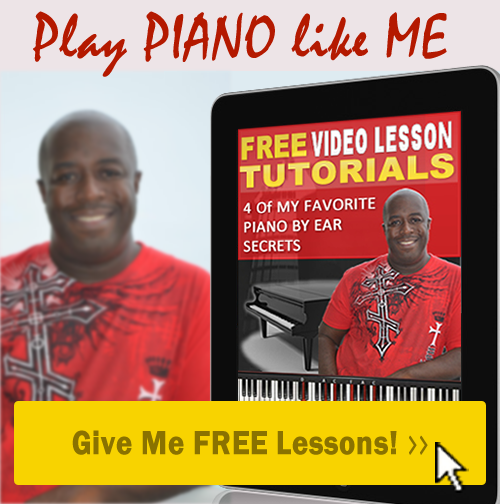Piano Tutorials – Using Chord Progressions For Writing Songs
Posted on 19. Sep, 2013 by Greg Hannon in Uncategorized
Question?
Good morning to you sir. Well, I write songs and God has blessed me with the ability to put them in music form. I need help getting the right chords to go with my songs. I am not a musician but I know that I have been blessed

with this extraordinary talent for writing and having the tunes that are in my heart. Some musicians have told me that as gifted as they are in playing, they do not have the gift to write songs. My question to you is….and I know that I am sounding very preachy but it’s just in me. Will your course help me achieve my goals? My desire is to get my songs copyrighted and recorded and be blessed by God financially to help others who are in the same shape I am. I do thank you for this awesome opportunity that you are offering to us. I want you to know that I definitely appreciate you. You do not have do offer this because I know many who just wouldn’t do it . Never the least I thank you in advance.
Answer
Yes, you do sound a little “preachy”, but that’s okay. However, there is a word from the Lord. The gift of song writing and “playing by ear” are essentially the same. The music to all songs began with a chord progression. Figuring out the chords to a song begins with hearing those progressions by ear. I tell my students that new songs are being written everyday, but writers are using the same chords progression that’s been around for many years. In other words musicians aren’t creating any new progressions, they’re just using the ones that seasoned musicians and writers already know.
In order to be proficient in writing songs or ”playing by ear” the individual must be familiar with the chord progressions used in today’s music. So what do you mean, in order to write songs I need to understand progressions? I’m glad you asked. Let’s look at the 4-3-2-1 chord progression below. The following chords are from the Diatonic Chord table in my Contemporary Chord Finder learning System:
Chord Progression
4 = F / E A C
3 = E / D G B
2 = D / C F A
1 = C / B E G
This progression has been used in thousand of R&B and Gospel songs. Let me name a few.
Minnie Rippleton – Loving You (Is Easy Cause You’re Beautiful)
Luther Vandross – Don’t You Remember (You Told me you Love Me Baby)
Donnie McKirklin – Ooh Child (Things Are Gonna’ get easier)
Joe – I Wanna Know
If you can play the four chords in the progression above, you have the ability to play any song written using this progression including the three songs I listed above. So how do you take one chord progression and play all those songs? Wouldn’t they all sound the same? I’m glad you asked. The secret ingredients that gives each song it’s unique sound are six components. The tempo, style, key, groove, rhythm and melody of the song. This personal touch added by the writer gives the song its originality.
If you’re familiar with the songs I listed above, try singing the melody and playing the progression until you get the chord to match.
So the answer to your question is yes, my products such as the CCF and my Worship Chord, Intro, Endings & More DVD will be a great resource for learning chord progressions. In order to add chords to your songs, you need to understand progressions.


